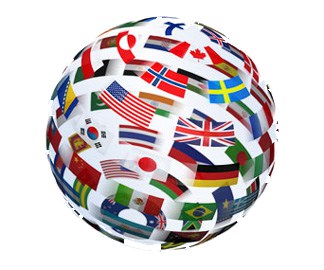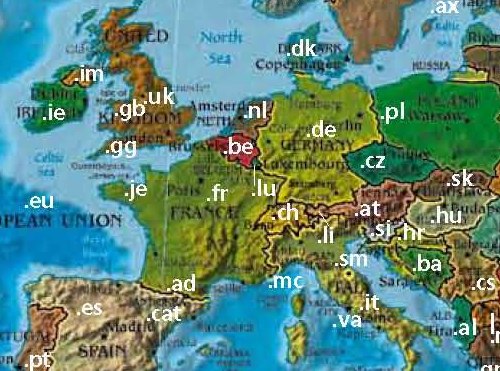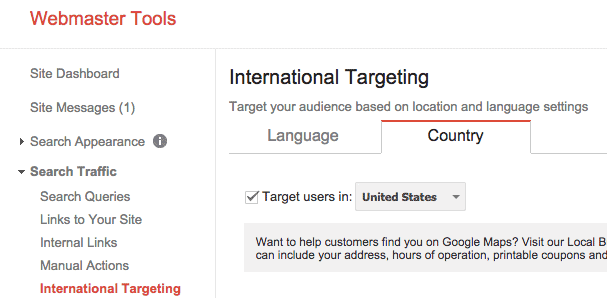Country domains are very crucial for every company that wants to rank its site high enough in country specific search results. Thing is, Google often prioritizes sites that are optimized for local search results. Using a country domain name emphasizes that your company and brand are relevant to that particular location and serious about doing business in the country. This post is going to show what kind of options you have in order to make use of Google’s local bios and outrank your competitors in a specific country’s local search. Before we go any further about actual options, you may want to learn more about country domain benefits.
What are Country Domains?
A country domain (also known as a country-specific domain name) is a domain that somehow shows what country the site is primarily designed for and wants to do business in. Later in this post, you’ll get to know about a few possible approaches that you may want to follow in terms of country domains.
Why Country Domain?
For one, folks in some countries tend to more use services and buy products from companies that clearly demonstrate what country they’re catering for. The Frenchmen practice this approach really wholeheartedly. You have by a long shot more chances to sell something in France if your site has the .fr country code top-level domain, which is also known as ccTLD. Doing so people in France support both their own companies and the companies that took the time to create a site for France and in French. So, it’s both patriotic and makes sense because it helps France in either case.
That said, there’s one more reason to use country specific domain names Thing is, Google can show your snippet higher in search results if you use a country domain provided that you search in that particular country. Thus, it’s really beneficial to show Google that you’re absolutely relevant for that particular country and that’s why you’re entitled to rank higher for that country’s local search results.
So, you just learned why it actually makes sense to use country domains both for user friendliness and specifically for search engine optimization benefits. Now you wanna see what kind of options you have to make use of this aspect.

ccTLD
As you already know, ccTLD stands for country code top-level domain. Basically, we’re talking about domains like mysite.de, mysite.fr, mysite.us, etc. You can say what country a domain belongs to just at a glance. Such domains have a two-letter code at the end that defines the country. For example, French ccTLDs end with .fr (for France), German ones end with .de (for Deutschland, which is Germany in German), etc.
If you represent a big international brand and you want to demonstrate your respect to the target country or just prove your decency one more time, you totally need to use a country code top-level domain. I specifically stipulated that you need to be a big company because such domains can cost you an arm and a leg and you may also need to register a trademark in order to use a ccTLD. Being a huge international company, neither of the conditions should be an obstacle for you.
In case you’re in favor of a ccTLD for your site, here are the benefits that you can enjoy. It will boost your company’s image in that specific country and you have another proof that you’re serious about doing business in your target country.
Those two factors can help you open doors in some situations. That holds even more true if you also use the official language of the country. For instance, it goes without saying and makes perfect sense to use French on .fr domains.
You may also want to host your site on a server that is located in your target country because you’ll be able to use a country specific IP with your site. That gives you another point that should help you rank higher in local search results. Though the ccTLD option is a great choice in most cases, you should also take potential disadvantages into account.
Getting a new domain is like getting a brand new site when it comes to how Google understands it. Say, you’ve been using a .com domain for a few years now. It ranks high in search engines and you’ve got pretty decent PR, domain authority and other SEO metrics. Now that you have a totally new domain (the ccTLD one), you’ll need to start over and promote your new domain from scratch.
Google takes your country domain as a brand new site that has nothing to backup its quality and reliability with. It boils down to the fact that you’ll need to run a separate SEO campaign for your new domain name. Since search engine optimization is a long-lasting process, it can take you anything from a few weeks to months to rank your new domain high enough.
Should you not be ready for a totally new SEO campaign and just want to build upon an existing domain reputation, you may want to consider other options that are better with passing through some Google juice.
Subdomain
Your subdomain may look something like fr.mysite.com. If you use a subdomain, you will inherit domain authority to an extent. That means your subdomain will get some Google juice from your main domain and it won’t be like starting from scratch in the sense of link building. You’ll be able to promote your new site by a long shot faster in terms of search engine optimization. On a side note, that’s exactly the approach Wikipedia.org is using. For instance, de.wikipedia.org is a German version and fr.wikipedia.org is a French one.

Though using a subdomain solves the issue of inheriting some domain authority and takes care of brand awareness, such approach does not fix the fact that such domains may look somewhat clumsy. Here’s one more option for you.
Subdirectory
As a matter of fact, it’s the most simple method because you can create as many subdirectories under your domain as you see fit and you’re not supposed to pay for that anything extra. If you have a website with mysite.com as domain, you can create subdirectories such as mysite.com/fr, mysite.com/de, etc. The benefit of using a subdirectory is that it’s extremely easy to set up and you won’t have to launch a separate SEO campaign because the links that you built for your root domain (mysite.com) will also positively influence your subdirectory and the content you house there. This approach allows you to emphasize the brand and helps with faster promotion in search engines. Problem is, using a subdirectory is not the best idea for country-biased users. So, you need to choose which is of more importance for you: ease of use or brand reputation.
One More Option
Having considered all the pros and cons of using both the subdomain or subdirectory approach, you still don’t get the same country-biased benefit which you get when you use a country specific domain. There’s a neat little gotcha that you may want to use to help Google better understand which exactly country your site is for. Thing is, you can specify that sort of info in your Google Webmaster Tools settings. It goes without saying that it’s not gonna give you the same local SEO benefit as using country domains, but it’s a pretty good thing to do if you just can’t go the ccTLD way. As a rule of thumb, it’s pretty much the only way to somehow target your country if you work with an established site rather than getting a brand new one off the ground.

Bottom Line
All in all, there’s a bunch of ways you can go when deciding what kind of domain to use for better performance in local or country specific search results. You can use ccTLDs, subdomains or subdirectories. Each of the methods has both advantages and drawbacks. You just need to decide what matters most to you and your specific case.
Which way would you go? Which option would you choose if you needed to make your choice in such a situation? Perhaps, you have one more method up your sleeve?





